
In the ever-evolving landscape of soccer, the 4-1-3-2 formation stands as a testament to the game’s strategic depth and its continuous adaptation to changing times.
This formation, a blend of defensive resilience and attacking prowess, has not only survived but thrived in the competitive world of football.
As a soccer player/ coach and fan with over thirty years’ experience, I have witnessed firsthand the transformation of this tactical setup from a mere experimental arrangement to a cornerstone strategy for many successful teams.
The 4-1-3-2 is more than just numbers on a tactics board; it’s a philosophy, a way of seeing the game through a lens of balance and versatility.
At its core, the formation is designed to maximize team potential by leveraging the strengths of each player.
It’s a story of how a single defensive midfielder can anchor a team, providing the foundation upon which attacks are built and from which defenses are fortified.
It’s about the dynamism of three midfielders who must constantly oscillate between offense and defense, acting as the team’s engine.
…and it’s a tale of two strikers, working in tandem to outmaneuver robust defensive lines.
In this comprehensive guide, we will delve into every aspect of the 4-1-3-2 formation. From the tactical philosophy that underpins it to the roles and responsibilities of each player, we will explore how this formation shapes not just the style of play, but the very ethos of a team.
We will examine its defensive dynamics, highlighting the crucial role of the defensive midfielder and the coordination required among the back four.
The intricacies of the midfield operations, pivotal in both defending and attacking phases, will be scrutinized to understand the balance needed for the formation to succeed.
The attacking strategies, centered around the dual-striker setup, will be dissected to showcase how this formation can be as potent in offense as it is solid in defense.
We will also cover the all-important transition phases, crucial moments where games are often won or lost.
Set pieces, often the game’s turning points, will be analyzed to understand how the 4-1-3-2 adapts in these critical situations.
To bring the theory to life, we will look at famous implementations of the 4-1-3-2 formation, drawing from both club and international football to illustrate its effectiveness and versatility. Finally, we will discuss training and drills tailored to this formation, providing practical insights for coaches and players alike.
The 4-1-3-2 soccer formation, with its rich history and proven effectiveness, offers a window into the strategic heart of the beautiful game. Join me in unraveling the nuances of this formation, understanding its principles, and appreciating its impact on the global stage of soccer.
Tactical Philosophy of the 4-1-3-2 Formation
General Structure and Player Roles
In the 4-1-3-2 formation, the roles and positioning of players are critical in defining the team’s overall tactical approach. This setup is designed to offer a harmonious blend of defense and attack, calling for players adept in multiple facets of the game.
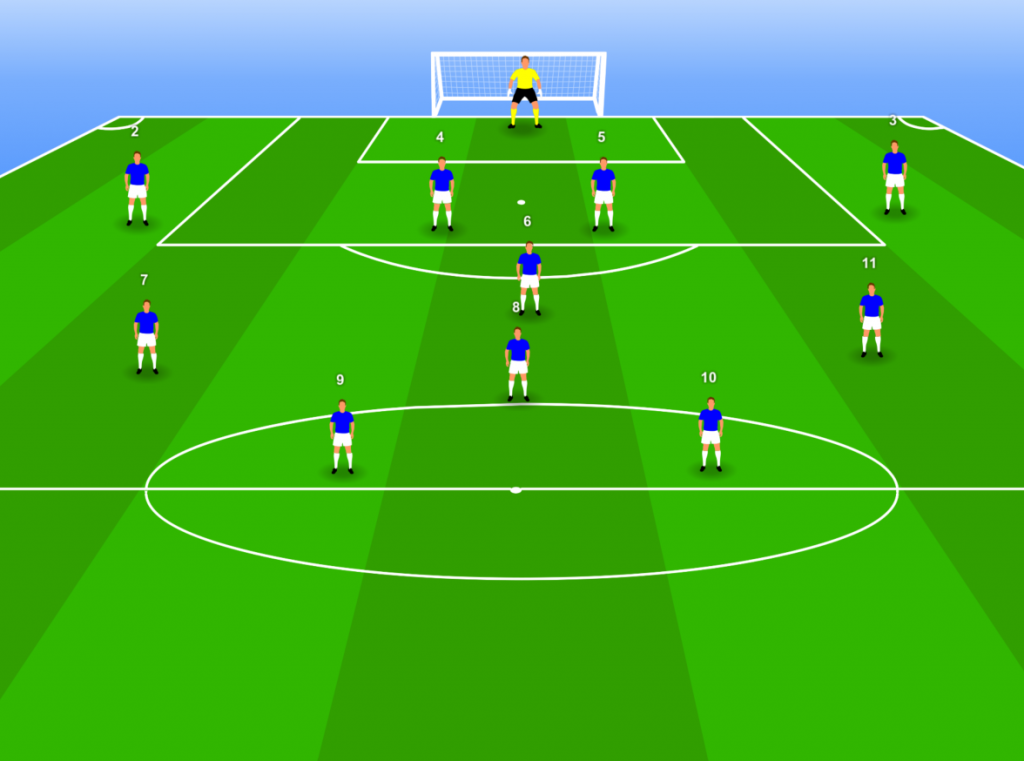
Description of Player Positions and Roles
Goalkeeper: The last line of defense, expected to be proficient in shot-stopping and distributing the ball effectively to initiate attacks.
Defenders (2 Center-Backs and 2 Full-Backs): The center-backs are the bulwark of the defense, focusing on marking, tackling, and aerial prowess. Full-backs, on the other hand, are required to contribute to both defense and attack, often overlapping with midfielders to provide width.
Defensive Midfielder: This lone pivot acts as a shield for the defense, intercepting passes and breaking up opposition plays. Their role is also to link defense with attack, often initiating forward moves.
Central Midfielders (3): These players are the engine of the team, responsible for controlling the tempo of the game. Their duties include facilitating ball circulation, supporting defense, and contributing to attacks.
Forwards (2): One typically acts as a target man, holding up the ball and laying it off to teammates, while the other plays off the target man, using pace and movement to create scoring opportunities.
Key Attributes for Players in Each Position
Goalkeeper: Composure, good reflexes, and excellent distribution skills.
Defenders: Strong in tackling and aerial duels, with good positional awareness.
Defensive Midfielder: Tactical intelligence, excellent reading of the game, and strong in both defense and simple, effective distribution.
Central Midfielders: Versatility, stamina, creativity, and good passing ability.
Forwards: Combination of physical strength (for the target man) and agility or pace (for the second striker), along with clinical finishing skills.
Formation’s Flexibility
The 4-1-3-2 is not a rigid structure; its effectiveness lies in its adaptability.
Adaptability in Different Game Situations
Defensive Stability: When under pressure, the formation can easily shift to a more defensive 4-4-2, with the midfield four providing a solid shield.
Attacking Prowess: In attacking scenarios, the formation can morph into a 3-4-3, with one of the full-backs pushing forward to add to the attack, while the defensive midfielder drops back to assist the center-backs.
Variations within the 4-1-3-2 Setup
Role of Full-Backs: Depending on the opposition’s strength and game context, full-backs can either adopt a more conservative role or act as auxiliary wingers.
Midfield Composition: The central three can be arranged in various combinations (e.g., one attacking midfielder and two holding, or vice versa) depending on the team’s strategic focus and the nature of the opposition.
The 4-1-3-2 formation, with its dynamic structure, offers a comprehensive approach to modern soccer, balancing defensive solidity with attacking flair. In the following sections, we will delve deeper into its defensive and offensive dynamics, exploring how teams can harness this formation’s full potential.

Defensive Dynamics
The 4-1-3-2 formation’s defensive approach is characterized by a well-organized structure that leverages both individual skill and team coordination.
At the heart of its defensive strategy lies the synergy between the defensive midfielder, the back four, and the supporting roles of the midfielders and forwards in defense.
The Role of the Defensive Midfielder
Anchoring the Midfield
The defensive midfielder in the 4-1-3-2 acts as the fulcrum around which the team’s defensive efforts pivot.
This player is tasked with screening the back four, intercepting opposition passes, and providing crucial cover for the defenders.
Their ability to read the game, anticipate threats, and disrupt the opposition’s play is paramount.
Transitioning from Defense to Attack
Beyond their defensive responsibilities, this midfielder plays a key role in transitioning the ball from defense to attack.
Their positioning and decision-making in possession are crucial, as they often initiate counter-attacks with precise, well-timed passes to the attacking midfielders or directly to the forwards.
Four-Man Defense Strategy
The effectiveness of the 4-1-3-2 formation’s defense hinges on the coordination among the four defenders.
They must work in unison, maintaining a cohesive line, and communicating effectively to manage offside traps and positional rotations.
The center-backs are particularly vital in organizing this defensive unit, ensuring that gaps are minimized, and coverage is maximized.
Dealing with Wide Attacks and Crosses
The full-backs in this formation are essential in dealing with wide threats.
They need to balance their offensive forays with the responsibility of tracking back to defend against wingers and overlapping full-backs from the opposition.
Their ability to close down spaces and prevent crosses is crucial in minimizing scoring opportunities for the opponents.
Defensive Weaknesses and Countermeasures
Potential Vulnerabilities
The 4-1-3-2 formation can be susceptible to certain types of attacks.
Overlapping runs by opposing wing-backs or wingers can stretch the defense, particularly if the team’s full-backs are caught too far upfield.
Additionally, a well-coordinated opposition press can disrupt the formation’s buildup play.
Strategies to Mitigate Risks
To counter these weaknesses, teams must ensure disciplined positioning, especially from the full-backs and the defensive midfielder.
The team can employ quick transitions to regain defensive shape and must be adept at dealing with high-pressure situations.
Training specific defensive scenarios and fostering a strong understanding among the defensive unit are key in mitigating these risks.
The defensive dynamics of the 4-1-3-2 formation demand not only individual excellence but also collective understanding and tactical discipline.
In the next section, we will explore the midfield operations, where the battle for control and dominance in a match is often won or lost.
Midfield Operations
The midfield in the 4-1-3-2 formation is where the game’s rhythm is established and controlled. This section of the team is pivotal in connecting defense with attack, and its effectiveness can often be the difference between winning and losing.
Central Midfield Trio
Balancing Offensive and Defensive Duties…
The central midfield trio in the 4-1-3-2 must exhibit a harmonious balance of offensive creativity and defensive diligence.
They are tasked with retaining possession, dictating the pace of the game, and providing defensive support when needed.
These midfielders need to be dynamic, capable of quickly transitioning from defense to offense and vice versa.
Importance of Midfield Creativity and Control
Creativity in midfield is vital for unlocking opposition defenses. One or more of these midfielders should possess the vision to deliver incisive passes and orchestrate attacking plays. Equally, their ability to control the tempo of the game, slowing it down or speeding it up as needed, is crucial in dominating the midfield battle.
Role of Wide Midfielders
In the 4-1-3-2 setup, the wide midfielders have a dual role. They must provide width in attack, supporting the forwards and overlapping with the full-backs, and also contribute defensively by tracking back and assisting their respective full-backs.
Their endurance and ability to constantly switch between attack and defense are key.
Interaction with Full-Backs and Forwards
The relationship between the wide midfielders, full-backs, and forwards is essential for the effective implementation of this formation.
In attack, the wide midfielders often work in tandem with the full-backs, creating overloads on the flanks.
In defense, they support the full-backs in nullifying opposition wingers.
Their understanding with the forwards is also crucial in delivering crosses and making timely runs into the box.
The midfield operations in the 4-1-3-2 formation require players who are tactically astute, technically proficient, and physically capable.
This section of the team acts as the bridge between the defensive solidity at the back and the attacking prowess upfront.
In the next section, we will delve into the attacking play, exploring how the 4-1-3-2 leverages its forward players to create and convert scoring opportunities.
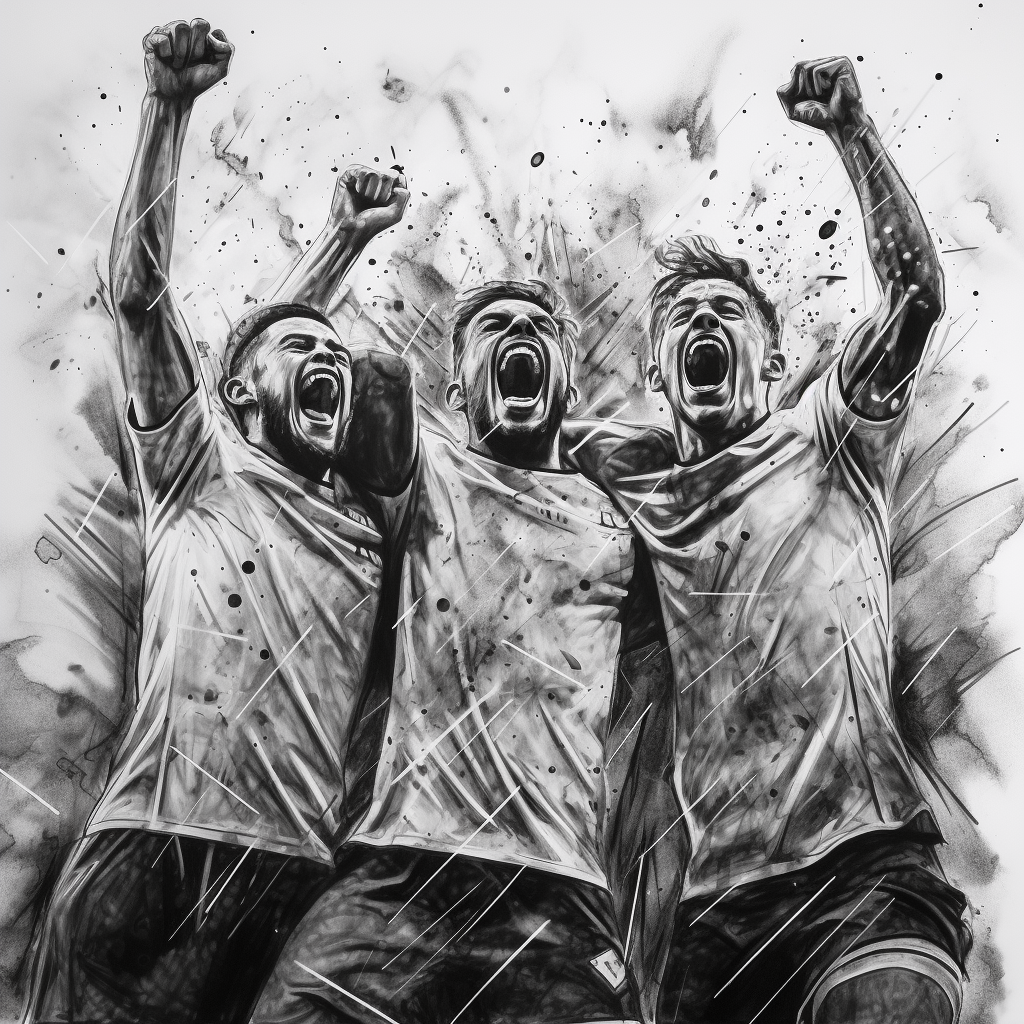
Attacking Play
The attacking strategy within the 4-1-3-2 formation is a fine blend of structured play and creative freedom.
This approach leverages the strengths of the two strikers, supported by the midfield, to create a multi-dimensional attack that can adapt to various defensive setups.
Dual Striker Advantage
Dynamics between Two Forwards…
The two forwards in the 4-1-3-2 operate in tandem, offering different but complementary skill sets.
Typically, one is a target man – strong, good in the air, and capable of holding the ball to bring others into play.
The other is often a more agile, pacey striker, adept at making runs behind the defense and exploiting spaces.
Their interplay can be a potent weapon, especially in breaking down stubborn defenses.
Creating and Exploiting Space
The movement of these two strikers is crucial in creating space, both for themselves and for their teammates.
Clever positioning and runs not only generate scoring opportunities but also draw defenders out of position, opening up channels for midfielders or wide players to exploit.
The dual threat posed by these forwards demands constant attention from the opposition, often leading to mismatches elsewhere on the field.
Support from Midfield
The three midfielders in this formation play a vital role in supporting the attack.
Their ability to deliver precise passes, combined with their timing in joining the forward line, adds an extra dimension to the team’s offensive play.
One midfielder, often with more attacking inclination, can make late runs into the box, providing an additional scoring threat.
Transitioning from Midfield to Attack
The fluidity of the transition from midfield to attack is a key feature of the 4-1-3-2.
This phase requires quick and intelligent ball movement, exploiting the spaces created by the forwards’ runs.
The midfielders must be adept at recognizing when to hold possession and when to accelerate the play, ensuring that the team maintains its attacking momentum.
The attacking play in the 4-1-3-2 formation is all about creating a dynamic and unpredictable offense that can adapt to different defensive setups.
The interplay between the forwards, supported by the creativity and drive of the midfielders, makes this formation a formidable attacking force.
In the next section, we will explore the transition phases, focusing on how teams switch from defense to attack and vice versa, maintaining balance and coherence in their play.
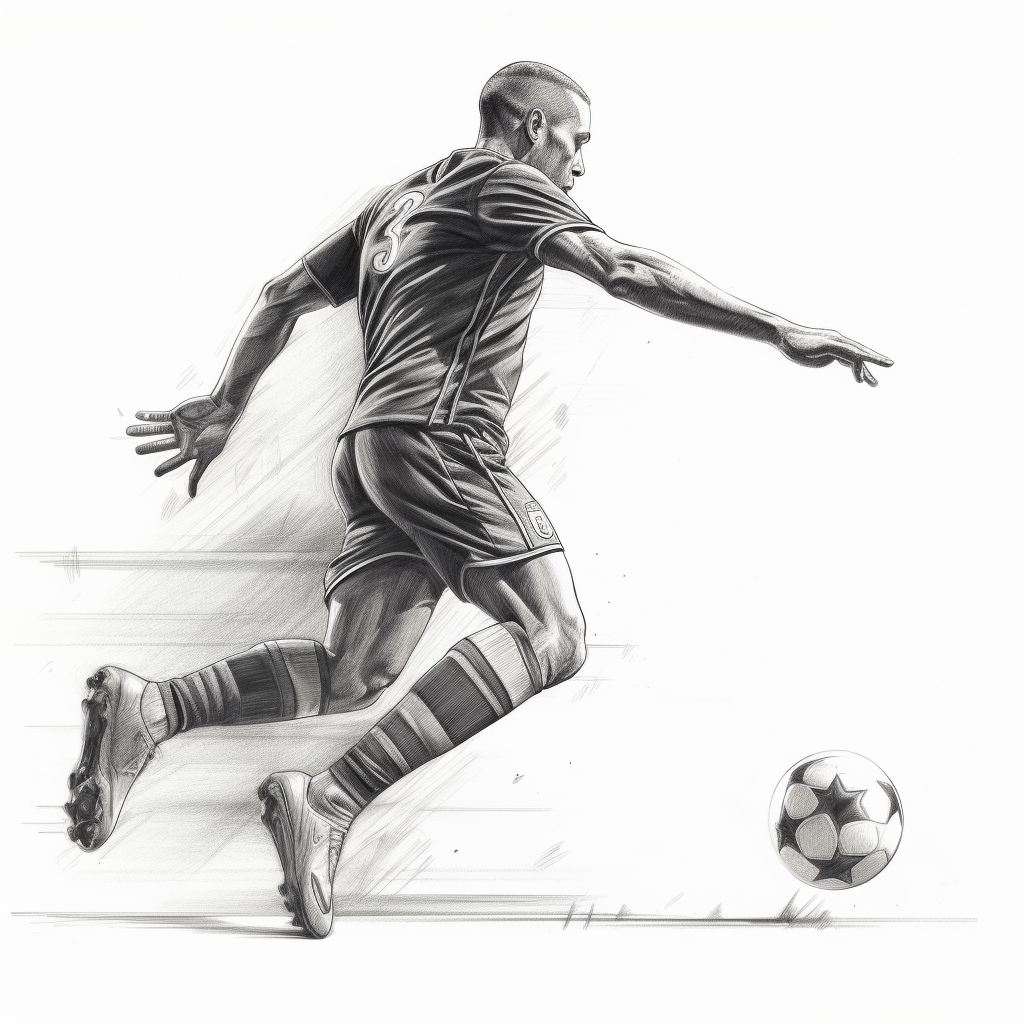
Transition Phases
In soccer, the ability to effectively manage transition phases – shifting from defense to attack and vice versa – is often what distinguishes top teams.
The 4-1-3-2 formation, with its balanced structure, offers a solid framework for handling these crucial moments in a game.
From Defense to Attack
The transition from defense to attack in the 4-1-3-2 formation often starts with the defensive midfielder or the center-backs. These players are responsible for intercepting the ball and quickly turning defense into offense.
Their ability to read the game and make accurate, forward-thinking passes is crucial in initiating counter-attacks.
Speed and Efficiency in Transition
The effectiveness of transitioning into attack hinges on the speed and efficiency of moving the ball from defense to the forwards.
Quick, precise passing, coupled with intelligent movement from the midfielders and forwards, is key to exploiting the moments when the opposition is unbalanced.
This phase requires players to have a high level of tactical awareness and technical skill to execute rapid shifts in play.
From Attack to Defense
When an attacking move breaks down, the team must quickly retract into a defensive formation to prevent counter-attacks.
The wide midfielders and full-backs need to fall back rapidly, while the central midfielders and the defensive midfielder reposition themselves to shield the defense.
This quick reorganization is vital to maintaining defensive solidity.
Pressing and Counter-Pressing Strategies
An essential aspect of the 4-1-3-2 is its approach to pressing and counter-pressing.
After losing possession, the team may employ a high press to recover the ball quickly or opt for a more structured retreat to their defensive shape.
The decision on which strategy to use depends on various factors, including the position of the ball loss, the players’ energy levels, and the nature of the opposition’s attack.
The transition phases in the 4-1-3-2 formation are about more than just moving the ball or players between attack and defense.
They encompass a complex interplay of tactical awareness, physical readiness, and technical ability.
These moments can define the flow and outcome of a match, emphasizing the need for teams to master the art of transition.
In the following sections, we will delve into the specifics of set-pieces and how the 4-1-3-2 formation adapts to these critical game situations.

Set-Pieces
Set-pieces are critical moments in a soccer match that can dramatically influence the outcome.
The 4-1-3-2 formation, with its structured approach and diverse player roles, offers various strategic options for both offensive and defensive set-pieces.
Offensive Strategies
Corner Kicks and Free-Kicks
In offensive set-pieces like corner kicks and free-kicks, the 4-1-3-2 formation provides a mix of aerial threat and ground play.
The two strikers, along with the center-backs, can be key targets for aerial balls due to their height and heading ability.
The wide midfielders and the more attack-minded central midfielder can exploit their agility and technical skills to create scoring opportunities from knockdowns or second balls.
Roles of Different Players
Specific roles are assigned to maximize the effectiveness of set-pieces.
While the taller players focus on aerial duels, other players are tasked with picking up loose balls or positioning themselves for a potential counter-attack.
One or two players, usually the full-backs or the defensive midfielder, stay back to guard against a breakaway by the opposition.
Defensive Set-Up
When defending against set-pieces, organization and communication are key.
The taller players, typically the center-backs and the target man striker, are crucial in clearing aerial threats.
The goalkeeper’s role in commanding the box and making decisive interventions cannot be overstated.
Dealing with Aerial Threats
The team must be well-drilled in marking assignments and aware of the opposition’s key threats.
Zonal marking or man-to-man marking strategies, or a combination of both, can be employed depending on the opponent’s tendencies and strengths.
The players must also be prepared to quickly transition to attack if the ball is cleared, taking advantage of any disorganization in the opposition’s setup.
In the 4-1-3-2 formation, set-pieces require a strategic approach, with players understanding their roles and responsibilities clearly.
Mastery of set-pieces can provide a significant edge in matches, capitalizing on moments of structured play to score or prevent goals.
As we conclude this in-depth exploration of the 4-1-3-2 formation, it’s evident that its effectiveness lies in the versatility and adaptability it offers, enabling teams to balance defensive solidity with offensive creativity.
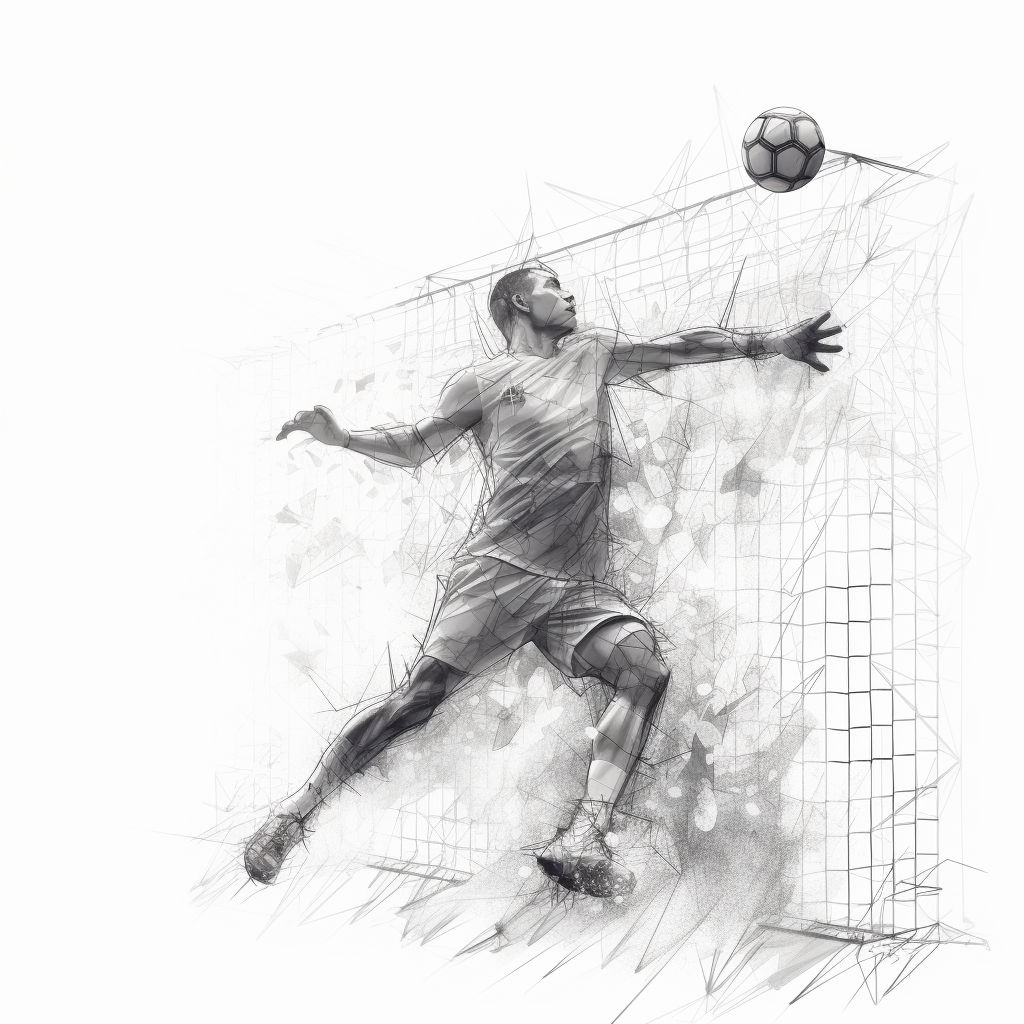
Training & Drills
For a team to effectively implement the 4-1-3-2 formation, targeted training and specific drills are essential.
These exercises are designed to enhance player skills suited to this formation and to foster a deep understanding of the tactical nuances involved.
Coaches focus on developing both individual player abilities and team coordination to maximize the potential of the 4-1-3-2 setup.
Developing Player Skills for the Formation
Goalkeepers: Drills focusing on shot-stopping, command of the penalty area, and distribution under pressure.
Defenders: Exercises to improve tackling, aerial duels, and playing out from the back. Practice in maintaining a cohesive defensive line and effective communication.
Midfielders: Drills to enhance ball control, passing accuracy, and transition play. Special emphasis on endurance training for wide midfielders to manage their dual role.
Forwards: Sessions to develop hold-up play, finishing, and off-the-ball movement. Combination play drills to enhance the partnership between the two strikers.
Team Exercises to Enhance Coordination
Team drills should simulate match scenarios to improve understanding and coordination within the 4-1-3-2 formation.
These include practicing defensive shapes, midfield control exercises, and attacking movement patterns.
Small-sided games focusing on quick transitions can also be beneficial.
Tactical Exercises- Simulating Game Scenarios
Tactical exercises that simulate specific game situations are crucial.
These include defending against counter-attacks, breaking down compact defenses, and exploiting spaces during transitions.
Such drills help players understand their roles and responsibilities in various phases of the game.
Developing Strategic Understanding
Video analysis sessions can be useful in developing players’ strategic understanding.
Reviewing both successful and unsuccessful implementations of the 4-1-3-2 formation provides insight into tactical decisions and on-field adjustments.
Interactive sessions where players discuss potential responses to different game situations can also be valuable.
Training and drills for the 4-1-3-2 formation should be comprehensive, covering all aspects of the game.
The aim is to develop players who are not only technically and physically capable but also tactically astute.
Such preparation is key to successfully implementing this formation and exploiting its full potential on the pitch.
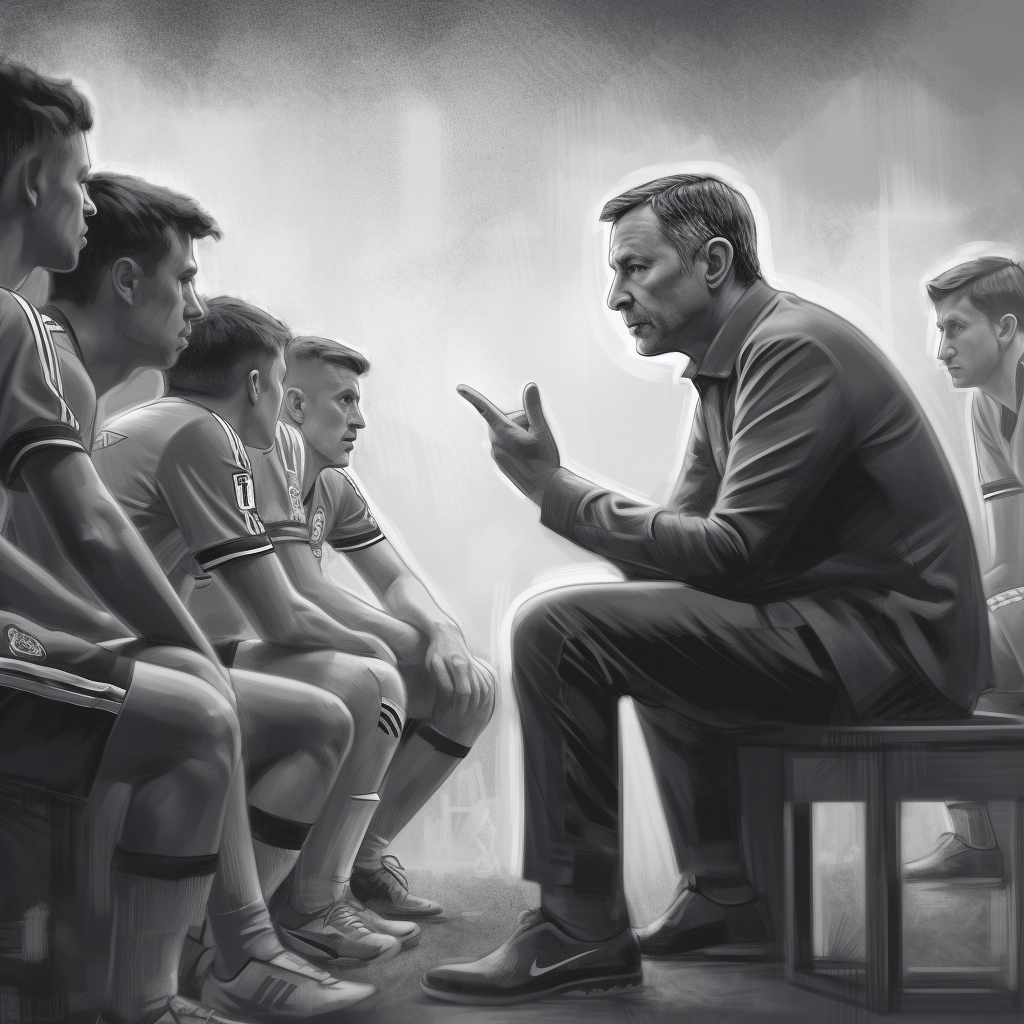
Final Thoughts
The 4-1-3-2 soccer formation, with its strategic flexibility and balanced approach, offers a comprehensive framework for teams to excel in both defensive and offensive play.
Through this exploration, we’ve seen how this formation can be adapted to suit various playstyles and counter diverse tactical challenges.
At its core, the 4-1-3-2 emphasizes the importance of a solid defensive base, a dynamic and creative midfield, and a synergistic forward line.
Each role within this setup is crucial, and the success of the formation hinges on the players’ understanding of their responsibilities and their ability to execute them effectively.
The dual nature of several positions, particularly the wide midfielders and full-backs, demands versatility and endurance, making player selection and training critical.
The famous implementations of this formation at both club and international levels have showcased its potential in achieving soccer success.
From dominating possession to executing lethal counter-attacks, the 4-1-3-2 can be a formidable strategy when employed by a well-coordinated team.
However, as with any tactical setup, the 4-1-3-2 is not without its challenges.
It requires meticulous training, a high level of tactical awareness, and players adept in fulfilling multiple roles.
The balance between attack and defense must be carefully managed to avoid vulnerabilities, especially during transition phases.
In conclusion, the 4-1-3-2 formation is a testament to the tactical richness of soccer.
It underscores the sport’s evolving nature and the continuous search for strategic perfection.
For coaches, players, and fans alike, understanding and mastering such formations not only enhances the effectiveness on the pitch but also deepens the appreciation of the beautiful game’s intricacies.
As soccer continues to evolve, formations like the 4-1-3-2 will remain central to the ongoing dialogue about the best ways to play and win in this most global of sports.
Frequently Asked Questions
What does a 4-1-3-2 formation look like?
The 4-1-3-2 soccer formation consists of four defenders (two center-backs and two full-backs), one defensive midfielder, three central midfielders, and two forwards.
This formation emphasizes a balance between a solid defense and a capable attack, with the defensive midfielder acting as a link between the backline and the midfield.
The midfield trio supports both defense and offense, while the two forwards lead the attack.
What is a 4-1-3-2 soccer formation?
The 4-1-3-2 soccer formation refers to a tactical setup comprising four defenders, one defensive midfielder, three central midfielders, and two forwards.
This formation is designed to provide a strong defensive structure with the four defenders and a single defensive midfielder, while the three midfielders offer control and support in both defense and attack.
The two forwards at the front work together to create and capitalize on goal-scoring opportunities.
The 4-1-3-2 is known for its balance, offering solid defense and potent attacking options.
Is a 4-1-3-2 football formation a good option?
The 4-1-3-2 football formation can be a good option as it offers a balanced approach with strong defense and potent attack.
It’s effective for midfield control and provides tactical flexibility.
However, its success depends on having players who fit the roles well, particularly versatile midfielders and full-backs, and requires a good understanding of tactics and coordination among players.



Leave a Reply